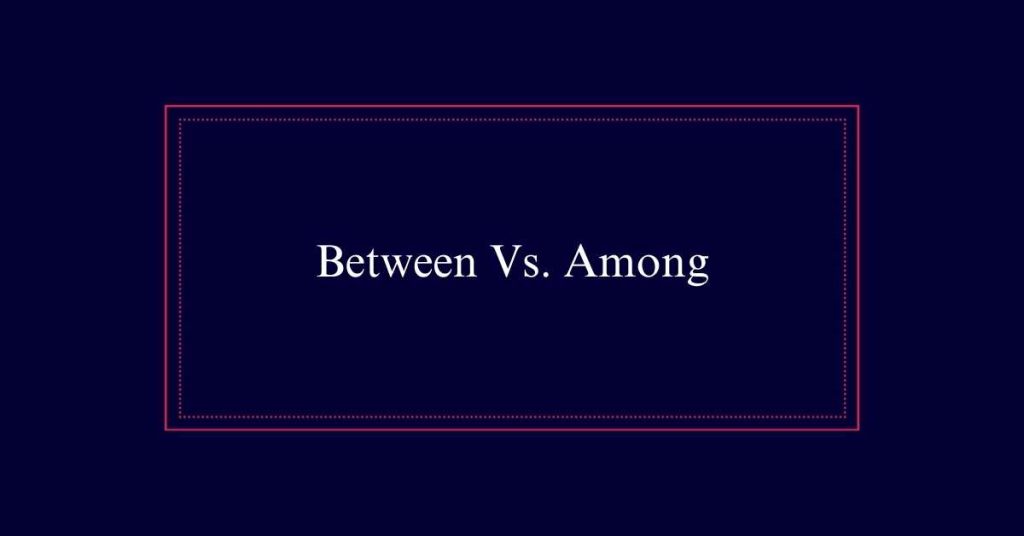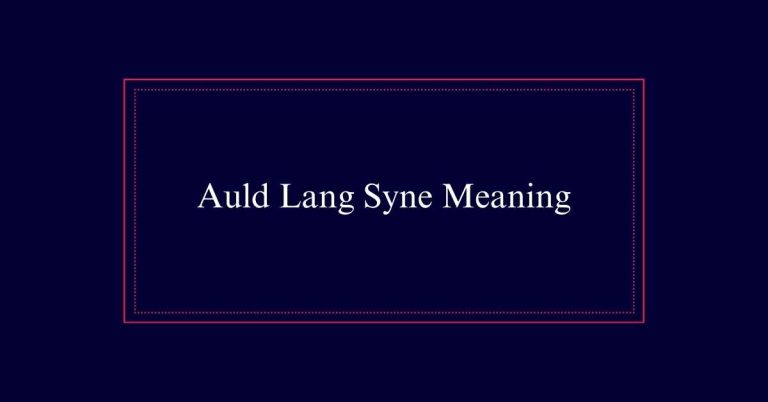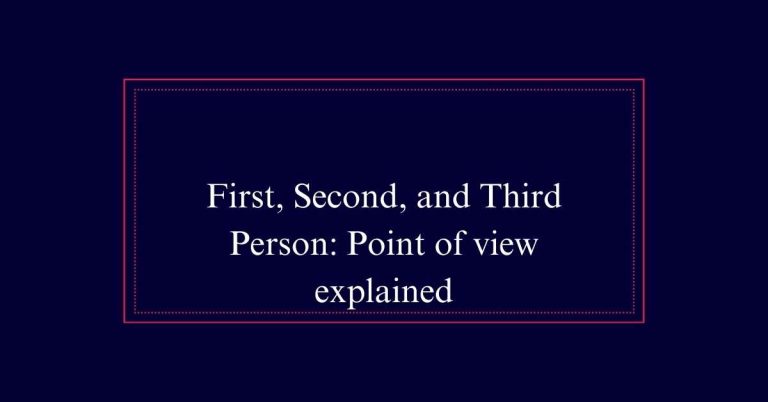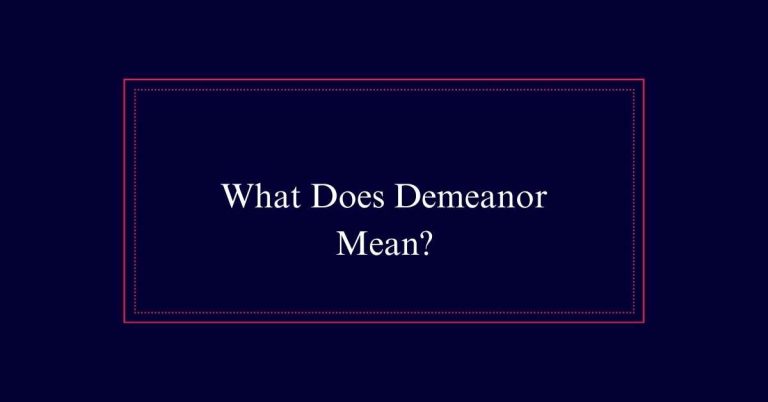Between Vs. Among
‘Between’ is used for separate elements, regardless of number, focusing on individual items or comparisons. For example, ‘The negotiation between the three departments.’ ‘Among’ indicates inclusion within a group, emphasizing collective relationships. For instance, ‘She felt at ease among her colleagues.’ Using ‘between’ incorrectly for groups may lead to confusion, while ‘among’ misused for distinct elements weakens clarity.
Definition of Between
Between is a preposition used to describe the relationship involving separate and distinct elements. It can apply to any number of elements, not just two. The key is that each element is considered individually.
For example, one might negotiate between member states, implying distinct, separate entities. Additionally, ‘between’ can describe spatial relationships, such as driving between cars, which suggests a clear middle point.
Contrary to a common belief, the Chicago Manual of Style supports using ‘between’ for multiple distinct elements. This usage underscores individual one-to-one relationships among the elements involved.
Thus, ‘between’ is versatile, suitable for both numerical and spatial contexts, provided the elements are distinct.
Definition of Among
Among is a preposition used to indicate that someone or something is part of a group or surrounded by other elements. It emphasizes a sense of belonging or being included within a collective. For example, ‘unity among council members‘ conveys that the council members form a single, cohesive group.
Similarly, ‘swimming among dolphins’ suggests being in the midst of many dolphins. Among is also used when elements are not distinct or clearly separated. It highlights a sense of integration within a collective whole. This usage is common in contexts where the individual elements are less important than their association with the group.
Using Between for Elements
The preposition ‘between’ is used for distinct and separate elements, regardless of their number. This common misconception that ‘between’ is limited to two items is incorrect. It can be applied to multiple elements when each element is viewed as separate and distinct. Consider its use in describing spatial relationships, negotiations, and comparisons.
Here are five key points about using ‘between’:
- Spatial Relationships: In the middle of something, such as ‘between two buildings.’
- Negotiations: Involving parties, like ‘negotiations between countries.’
- Comparisons: Distinguishing items, such as ‘difference between apples and oranges.’
- Travel Routes: Indicating paths, like ‘driving between cities.’
- Communication: Exchanges among people, such as ‘conversation between friends.’

Using Among for Groups
In contrast, ‘among’ is used when referring to people or things considered as a collective group. It highlights the idea of belonging to or being part of a larger whole. For example, “unity among council members” implies a sense of togetherness within the group. Similarly, “swimming among dolphins” suggests being surrounded by them.
Here is a table for clarity:
| Examples | Context | Meaning |
|---|---|---|
| Unity among council members | Group of council members | Togetherness within a group |
| Swimming among dolphins | Dolphins as a collective group | Being surrounded by dolphins |
| Consensus among experts | Experts viewed collectively | General agreement in a group |
One-to-One Relationships
When describing one-to-one relationships, ‘between’ is the appropriate word to use. This term is ideal for situations involving distinct elements that interact individually with each other.
For example, consider negotiations between two countries or a conversation between two colleagues. Each pair forms a unique relationship that is separate from any other.
Key points to remember:
- Use ‘between’ for distinct, individual elements.
- Suitable for multiple one-to-one relationships.
- Ideal for describing direct interactions.
- Useful for specific comparisons and contrasts.
- Applies to both physical and abstract elements.
Spatial Relationships
Spatial relationships often dictate whether to use ‘between’ or ‘among’ in a sentence. ‘Between’ describes a position in the middle of two or more distinct elements. For instance, you might stand between two buildings. It indicates clear separation and distinct borders.
On the other hand, ‘among’ is used when something is surrounded by a non-distinct group. For example, you might find yourself among a crowd of people. Here, the focus is on being part of a collective group rather than distinct entities.
Examples of Between
Several examples illustrate the proper use of ‘between’ in various contexts. For instance, ‘between’ is important when dealing with distinct elements, even if more than two are involved. It is also essential for spatial relationships indicating something in the middle.
Here are some examples to clarify:
- Negotiations between member states are important for international agreements.
- Driving between cars requires careful attention and skill.
- Communication between team members is necessary for project success.
- The river flows between the two mountains, creating a picturesque view.
- Choosing between multiple job offers can be a challenging decision.
Examples of Among
Among the various scenarios where ‘among’ is appropriately used, consider situations where elements are viewed as part of a collective group. For example, unity among council members illustrates how ‘among’ emphasizes the group nature of the council.
Another instance is swimming among dolphins, where the swimmer is surrounded by the aquatic creatures.
Additionally, an NPR report on Grammy nominees among Latin music categories shows how nominees are part of a larger, non-distinct group.
Finally, CNBC’s coverage of Walt Disney’s last will among big-ticket items highlights how the will is included within a broader collection.
Common Misconceptions
One common misconception is that ‘between’ should only be used when referring to two elements. However, ‘between’ can be applied to any number of separate and distinct elements, not just two. This misunderstanding often leads to incorrect usage.
Here are some key points to clarify:
- ‘Between’ can describe relationships among three or more items.
- It is used when distinct, individual entities are involved.
- ‘Among’ is more suitable for groups where individual members are not distinct.
- ‘Between’ is correct for spatial relationships indicating a middle position.
- Style guides, including the Chicago Manual of Style, support the use of ‘between’ for multiple elements.
Style Guide References
Referencing style guides can provide clarity on the appropriate usage of ‘between’ and ‘among’. The Chicago Manual of Style, for example, allows the use of ‘between’ even when discussing more than two elements, as long as they are distinct and separate. This debunks the common belief that ‘between’ is only for two elements.
Conversely, ‘among’ is used when referring to groups or things not seen as distinct elements. Garner’s Modern English Usage also supports this nuanced understanding. These references help writers determine the correct word based on context, whether indicating relationships among group members or specific choices between distinct options.
Following these guides guarantees precise and effective communication.
Frequently Asked Questions
Can Between and Among Ever Be Interchangeable?
“Between” and “among” are generally not interchangeable. “Between” refers to distinct elements, while “among” involves groups. However, “between” can sometimes be used for more than two elements if the relationships are distinct.
Are There Any Exceptions to These Usage Rules?
Yes, there are exceptions. Between and among can sometimes be used interchangeably in informal contexts. However, in formal writing, it’s best to follow the established rules for clarity and precision.
Can Between Be Used in Poetic or Literary Contexts Differently?
Between can be used in poetic or literary contexts to convey nuanced relationships or spatial arrangements. Its use can evoke a sense of connection or separation among distinct elements, enhancing the imagery or emotional impact of the text.







